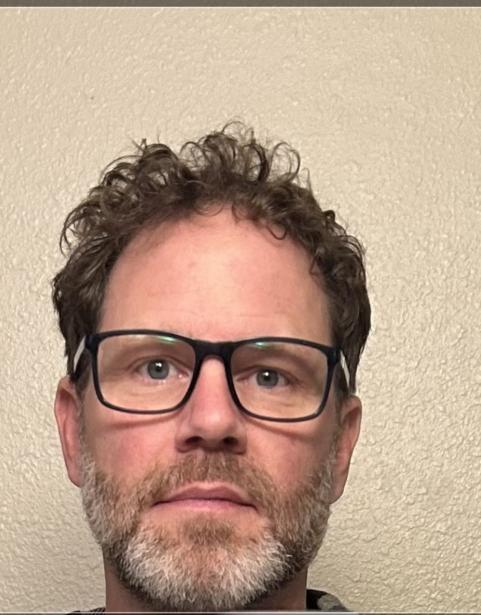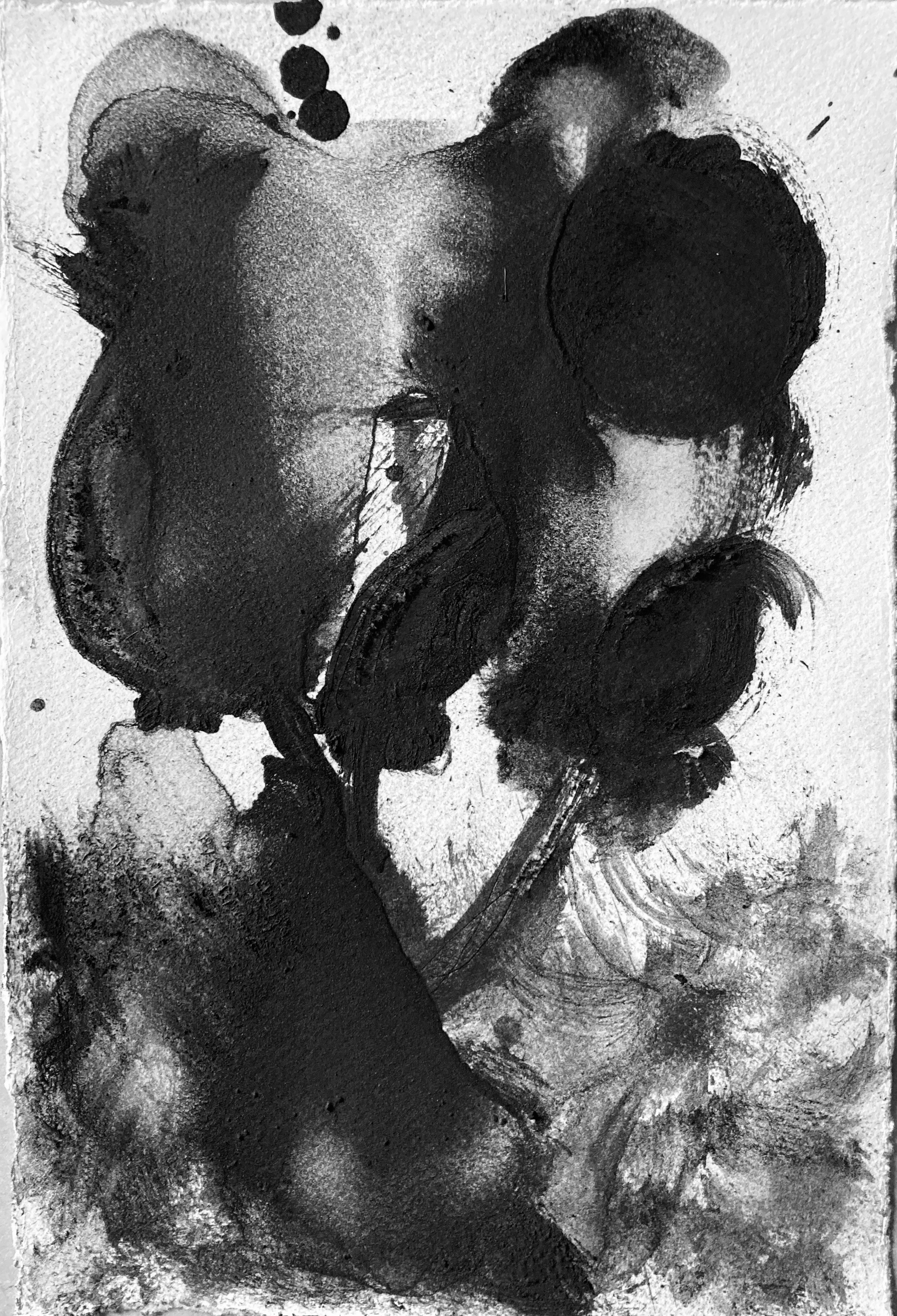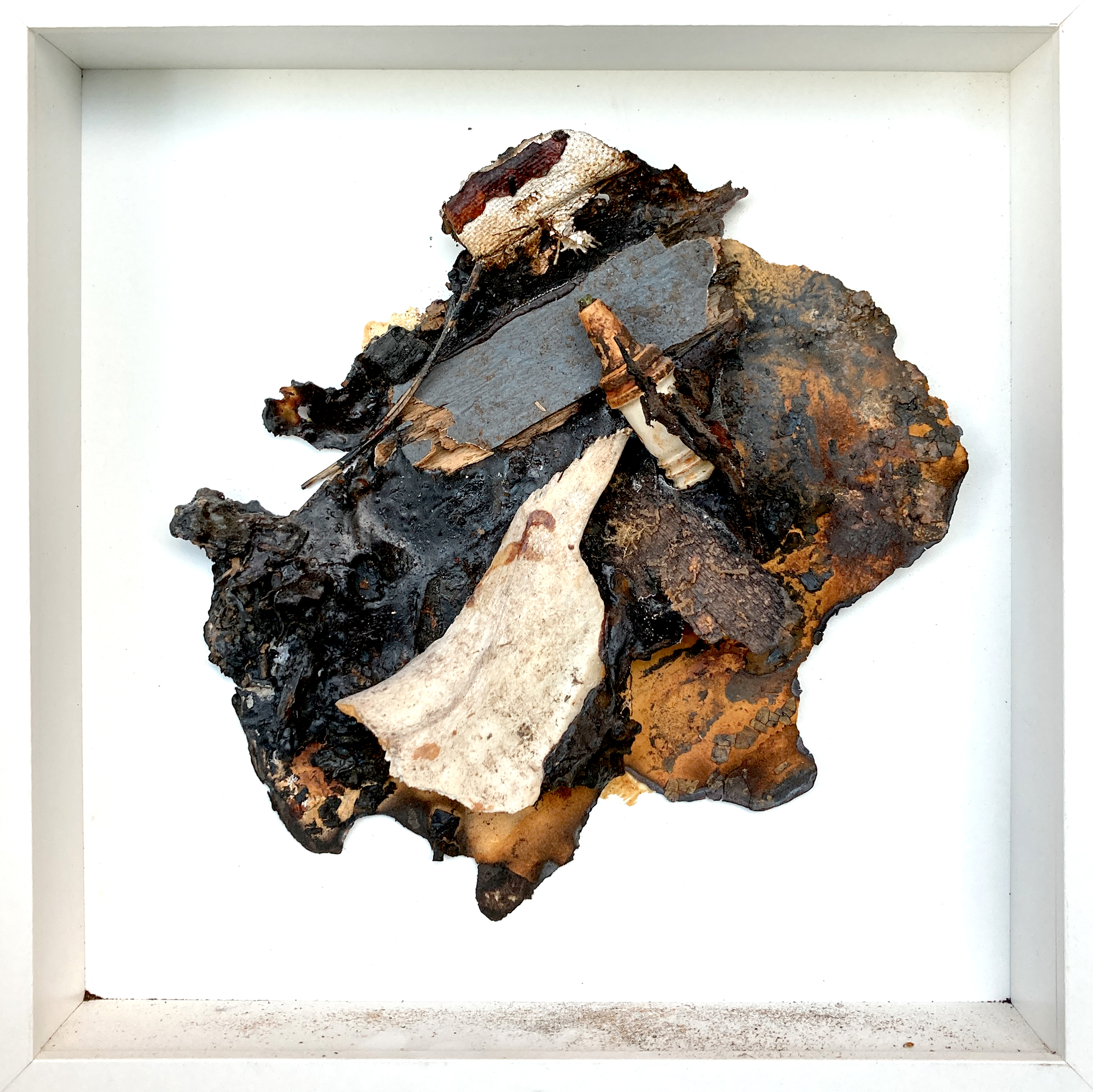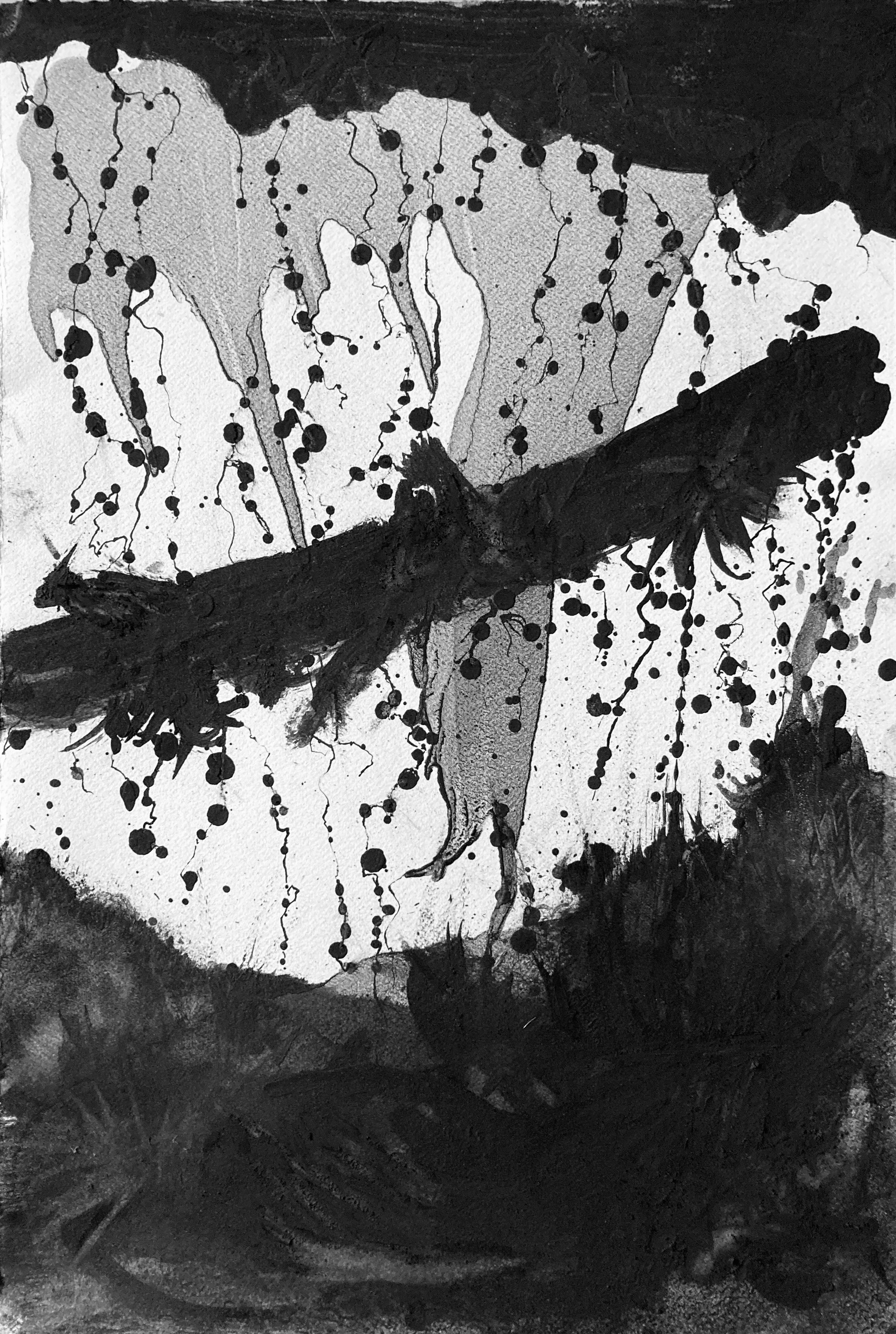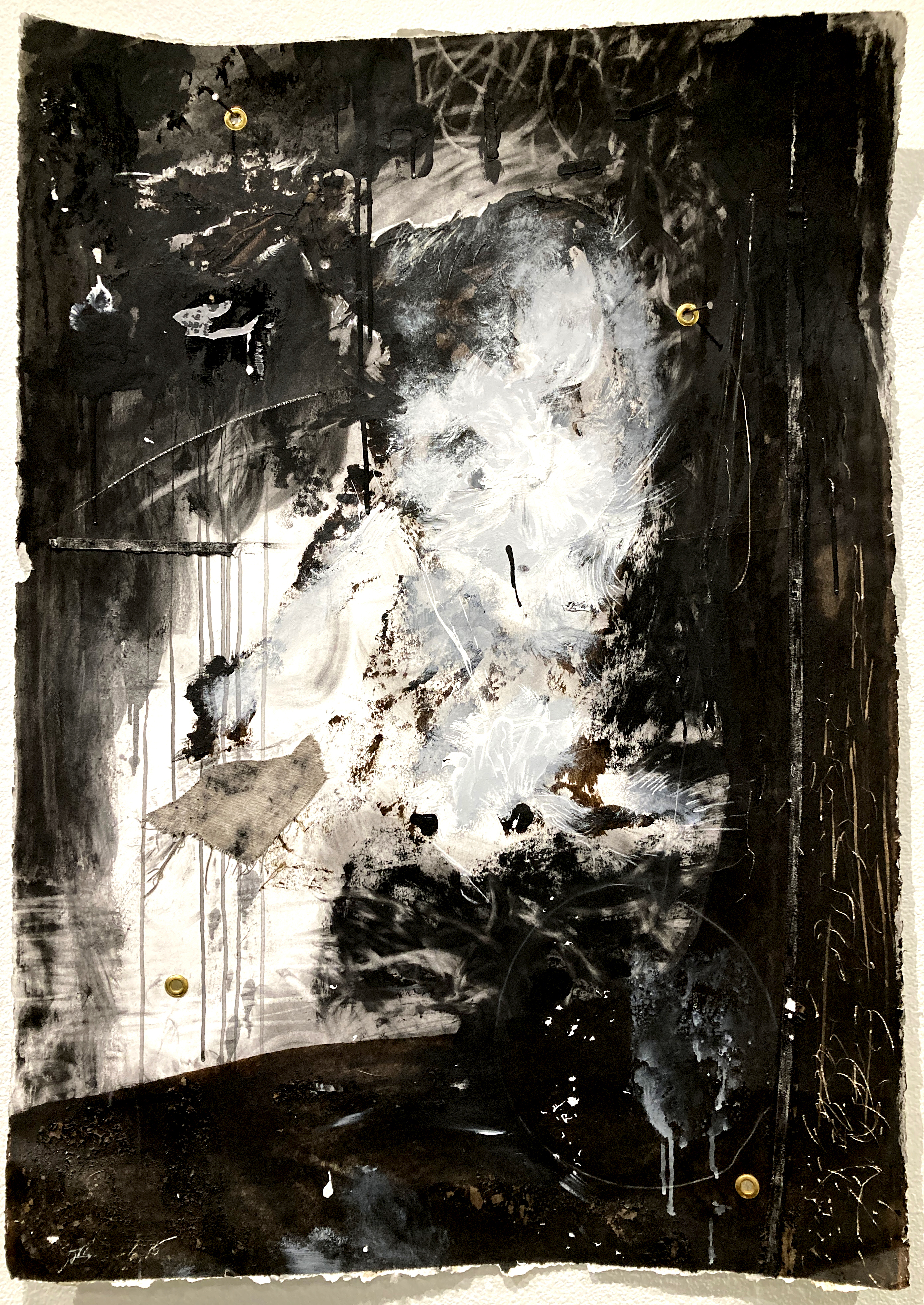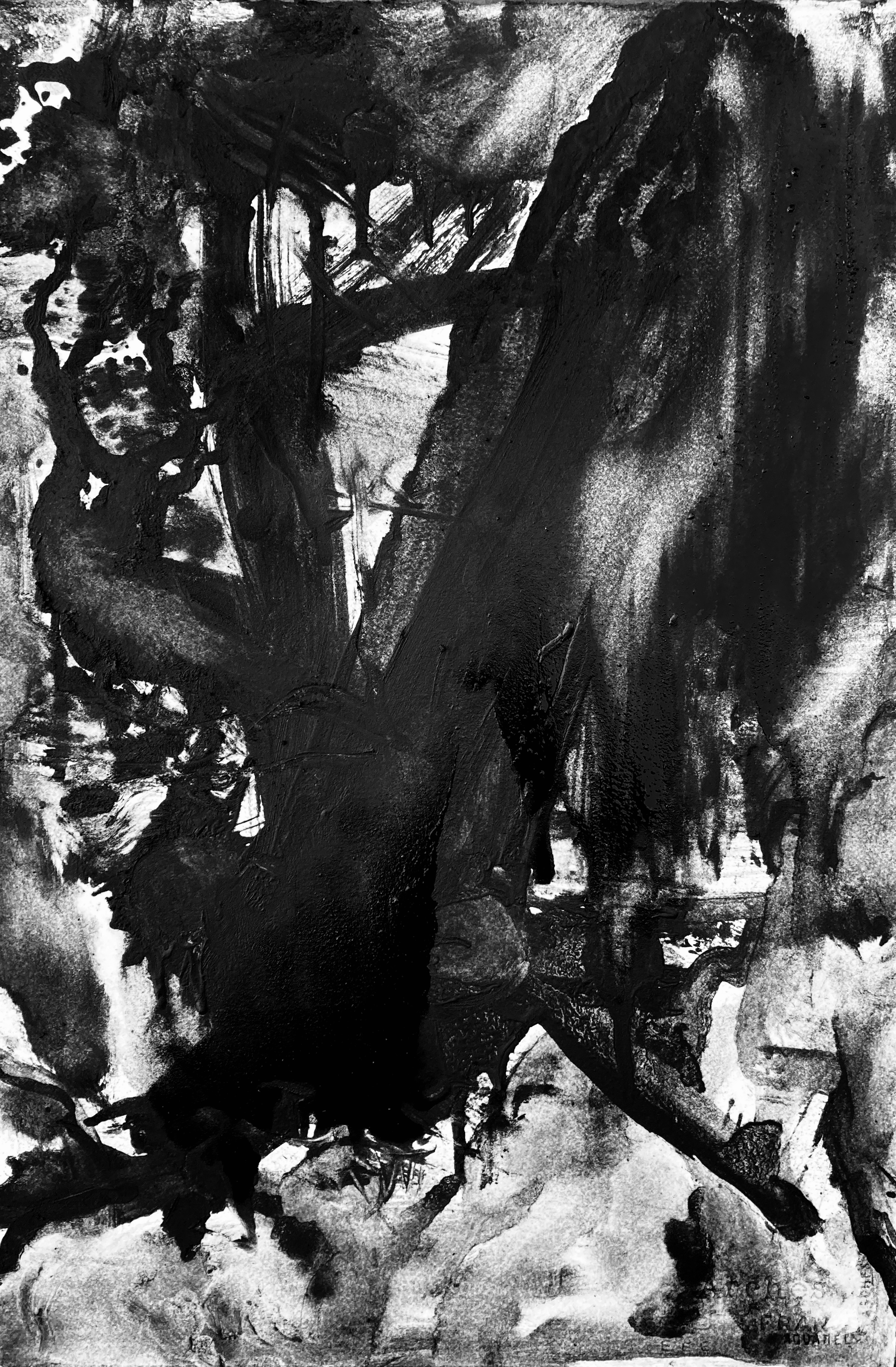Sean Barnes is an interdisciplinary artist based in the Pacific Northwest. He earned his BFA in painting from the University of Kansas at Lawrence and received a MFA in Visual Studies at Pacific Northwest College of Art in Portland, OR. Barnes is currently Gallery Director of the Leonor R. Fuller Gallery in the Kenneth J. Minnaert Center for the Arts and adjunct art faculty on the campus of South Puget Sound Community College in Olympia, WA.
There was never a time when human agency was anything other than an interfolding network of humanity and nonhumanity; today this mingling has become harder to ignore.
—Jane Bennett, Vibrant Matter: A Political Ecology of Things
Sean Barnes’ richly textured assemblage drawings, paintings, and sculptures represent topographies of the human condition and the natural world addressing aspects of mixing ecologies. Barnes draws inspiration from his life lived close to the land in Southwest Alaska, ecological theory, environmental philosophy, literature, and archeology to generate narratives and artifacts suggestive of a post-human era – evidence of an epoch of global, environmental human impact.
Barnes’ recent work reflects humanity's dissonant relationship to the natural world. Landscape and nature are cultural constructs that order and harmonize the natural world, reinforcing this dissonance. The core of his projects explore how interpretations of human ecologies inform an alternative conception of nature and landscape that is entangled and yet fragmented. Barnes' response to material and process aims to reveal a multifaceted view of the natural world beyond the frame of traditional landscape art. There are moments of contradiction and conflict between human and nonhuman ecologies where material is torn from one existence and in time fuses with another. The drawings and sculptural fragment’s frayed edges, charred ends, and emulsified stains form topography indicative of an alternative view of the natural world, not merely gazing out into the distance, but looking down, left, right, behind, and underneath. Barnes finds the intimate aspects of the enclosed, compressed spaces, and fragmented forms, draw us into deep reflection on the implications of the object. A nature where we are no longer detached from processes, but rather a nature where humanity is implicated in its formation, destruction, and rejuvenation. This form of inquiry and reflection aligns itself with contemporary notions of mixing ecologies within the Anthropocene, a term being used to describe a record, a history, and a memory of human impact on the Earth system.
